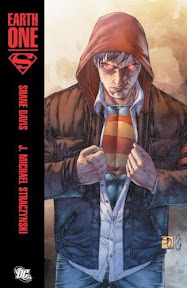
Review: Superman: Earth One graphic novel (DC Comics)
October 28, 2010
Live Superman: Earth One Discussion Event
October 26, 2010

Review: Justice League: Team History hardcover/paperback (DC Comics)
October 25, 2010

Review: Hawkworld trade paperback (DC Comics)
October 21, 2010

Ask Collected Editions #3 - DC Timeline and Fallen Son
October 20, 2010

Announcement: Upcoming Live Event!
October 19, 2010

Review: Supergirl: Death and the Family trade paperback (DC Comics)
October 18, 2010

Review: Red Robin: Collision trade paperback (DC Comics)
October 11, 2010

Review: Outsiders: The Hunt trade paperback (DC Comics)
October 7, 2010

Review: Teen Titans: Child's Play trade paperback (DC Comics)
October 4, 2010
